Resident builds recumbent bikes
After Don Reykdal’s back surgery, learning about the benefits of a recumbent bicycle was a life changer.
Riding conventional upright bicycles was “really hard on me, with a lot of pain,” recalls the long-time Alberta Avenue resident.
“So I did some research and saw a picture that was on the Internet of a recumbent bike,” he explains. “I saw the wide seat and thought, that’s got to be real comfortable. I want to have a bike like that.”
But back in the early 2000s, it was a minimum of $2,000 for this type of bike. “I thought, I can build one of those. That’s what started me on my adventure to build one.”
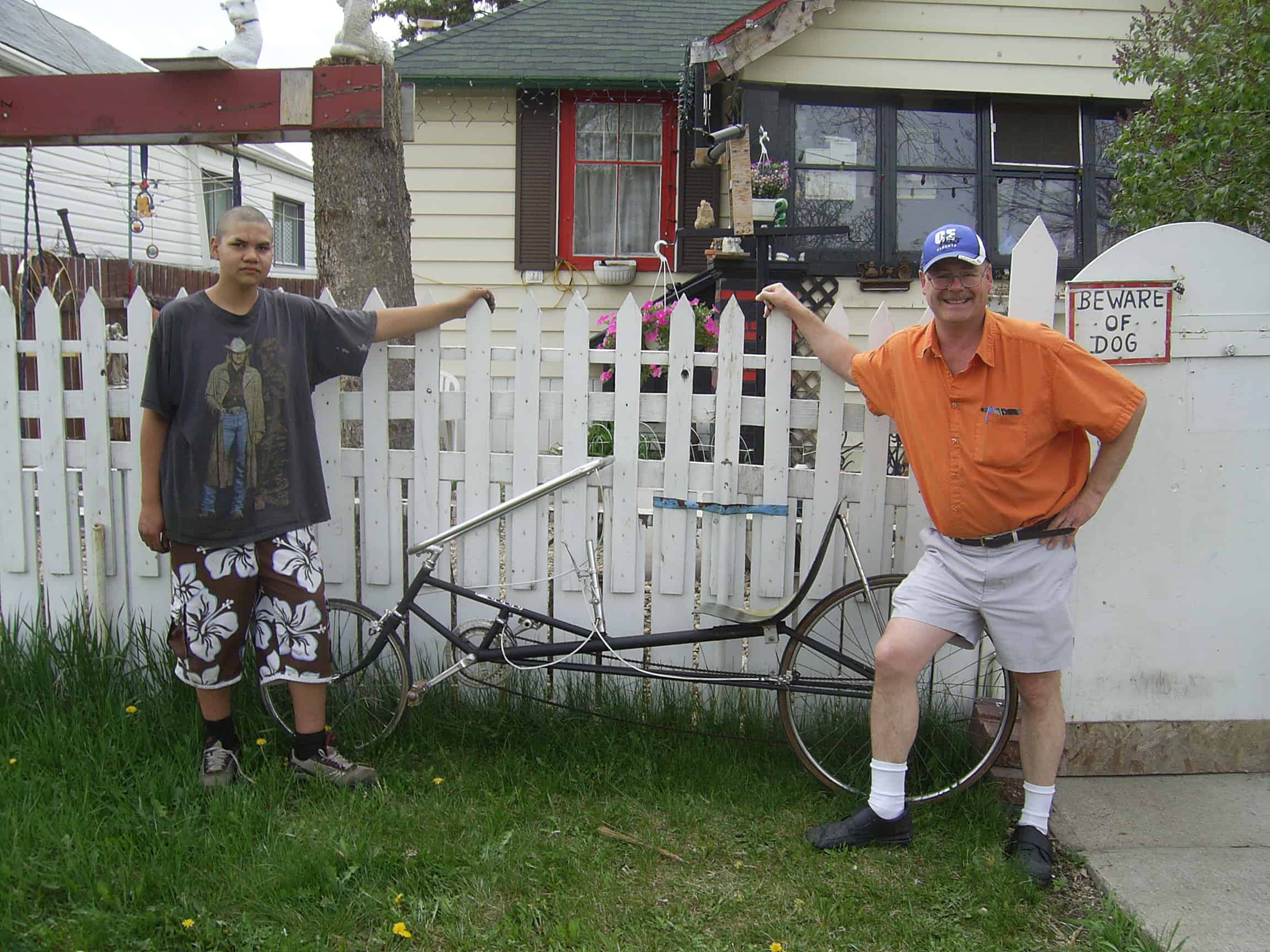

Recumbent bicycles recline the rider into the seat instead of the usual upright position of standard bikes.
The benefits are due to this reclined position, rather than sitting on a narrow bicycle saddle and hunching over the handlebar. The weight and pressure is taken off where it typically hurts while riding a bike, reducing loss of blood flow and nerve numbness, and is instead more evenly distributed across the body.
Lower back and pelvis issues are often remedied, and there’s more power since the legs are moving at an angle rather than up and down.
“Because the upper body is at a 35 degree angle, there’s more torque with your legs, and you can brace against the back of the seat,” explains Reykdal, who is a retired heavy equipment mechanic.
“I did a lot of welding when I was younger, and I put my first prototype together by welding, mostly the seat.”
That first effort “wouldn’t win any prizes for aesthetics,” he says. “But it was functional, I used it a lot. It was a very comfortable ride.”
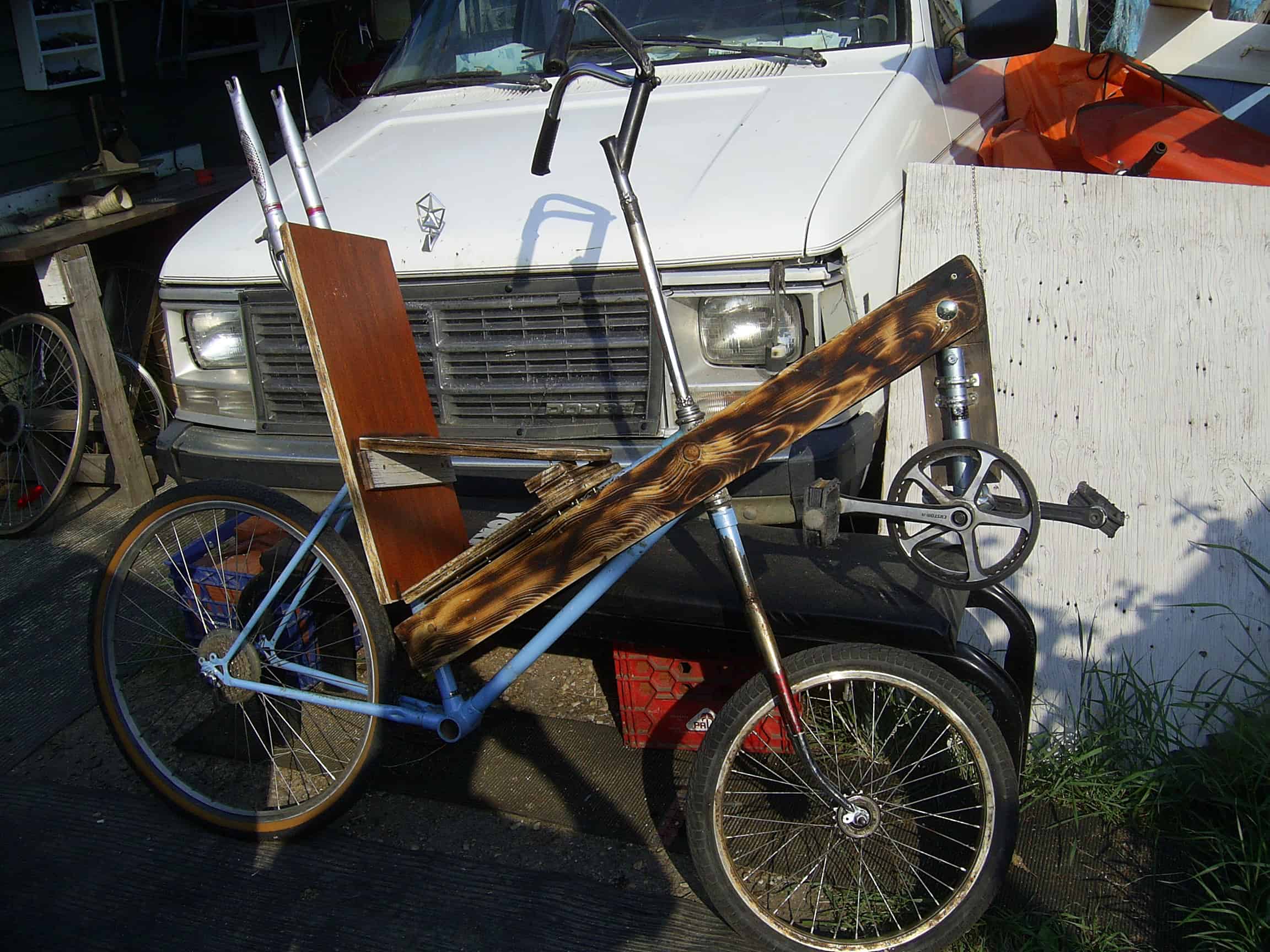
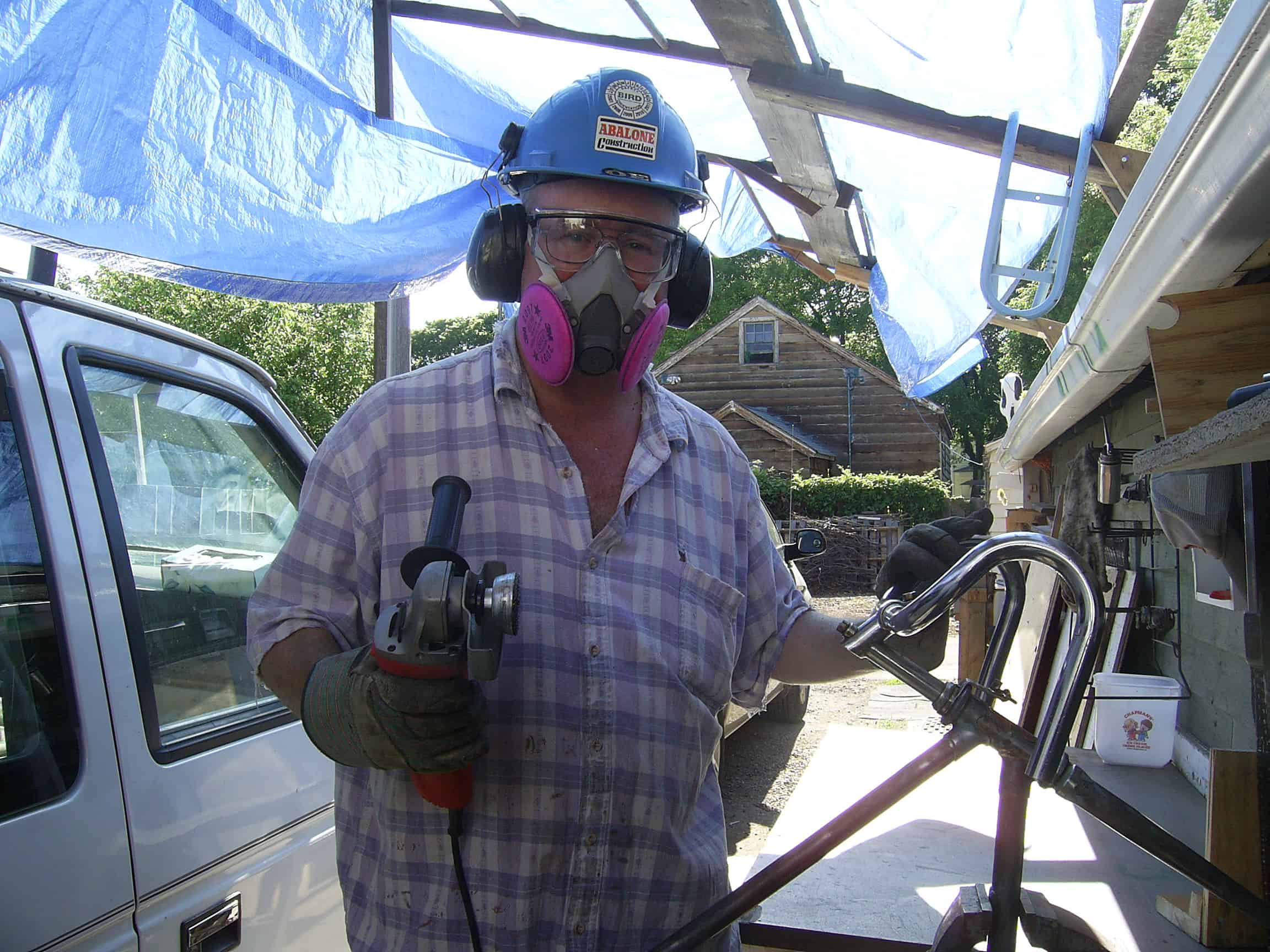
Now working on his fourth recumbent bike, Reykdal gets components from recycled bicycles and other sources. This time around, he’ll be using aluminum crutches, as they’re strong, lightweight, and have pre-set holes for adjustments. He’s also found that using a wooden beam eliminates the need for welding. Plus he likes the idea of recycling and re-using.
The benefits are not only the exercise, but also the social aspect. As he rode around the neighbourhood with his first few prototypes, he found it was an ice breaker for conversation.
“Some people would approach me to talk to me, I had cars stopping. I never had so much fun,” says Reykdal.
After open heart surgery in 2016, he’s found his recumbent designs have improved his health situation.
“I’ve been a diabetic for 25 years,” he says. “I need to get exercise, and walking is much harder on me than riding a recumbent bike. I can go a lot farther, do a lot more.”
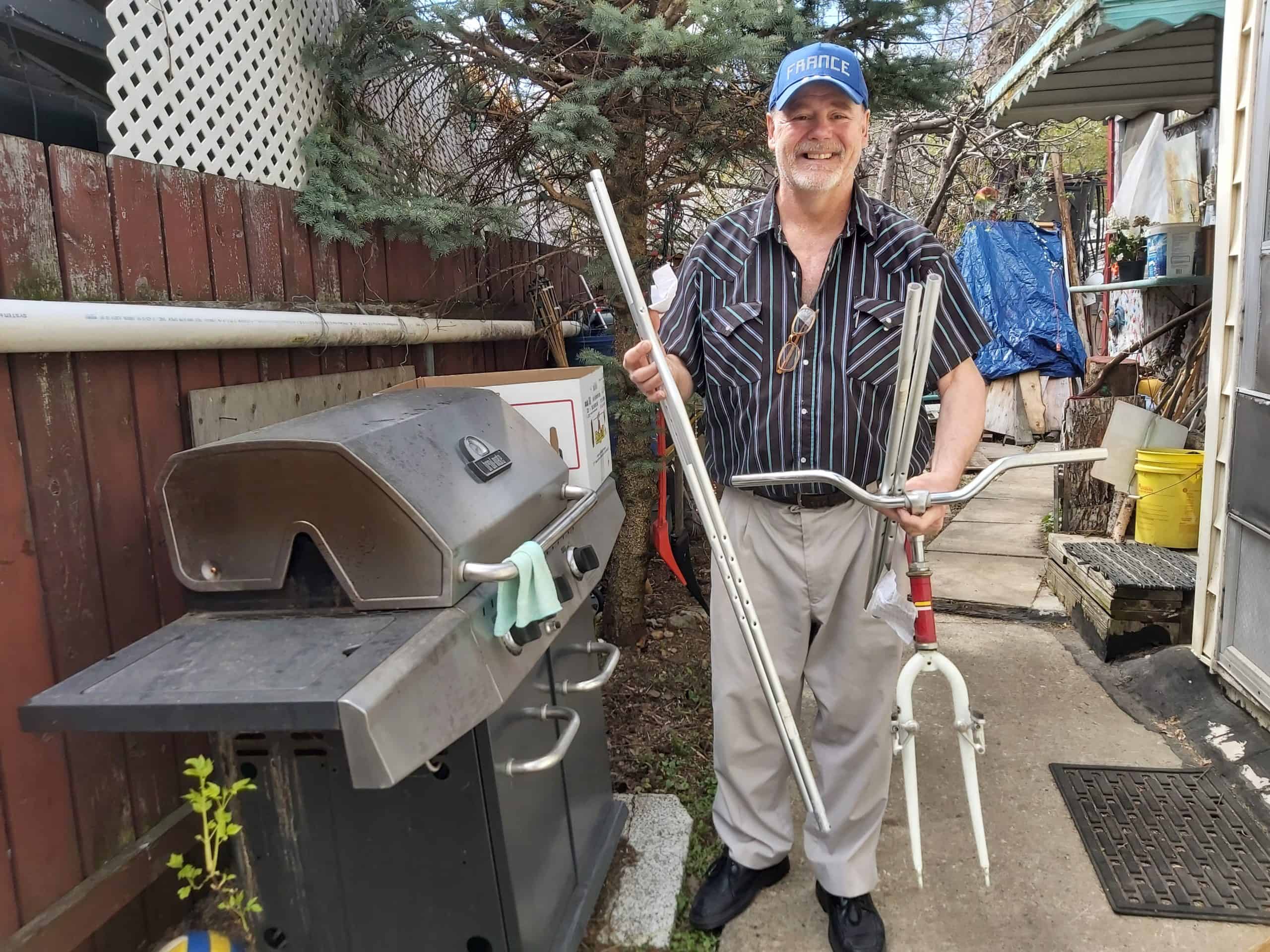
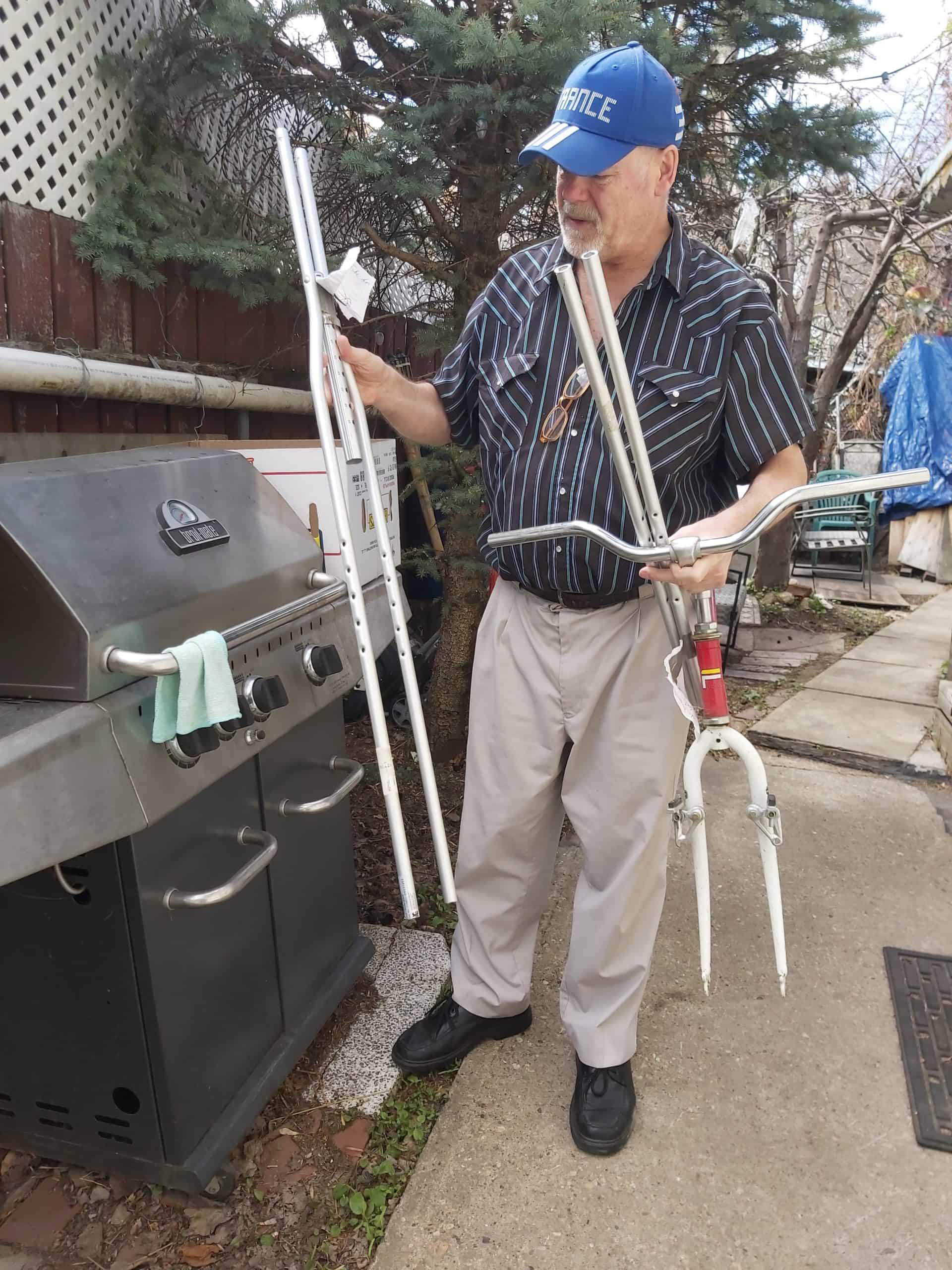
When his fourth bike is ready, he plans to get out for more exercise and enjoy the simple pleasures of getting about in the neighbourhood, especially now that new bike routes have been added to some streets.
If the weather cooperates, the bike should be ready by the end of June.







